Peter H. Diamandis: Planetary Resources
description: Peter H. Diamandis is a co-founder of Planetary Resources, a company that aims to mine asteroids for precious metals
21 results
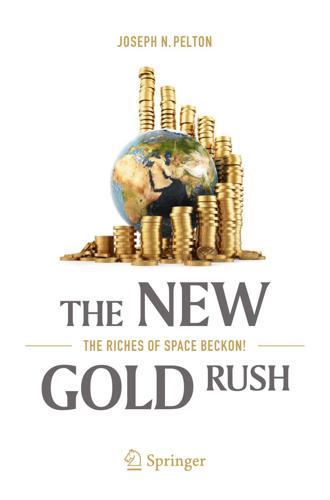
The New Gold Rush: The Riches of Space Beckon!
by
Joseph N. Pelton
Published 5 Nov 2016
Well before Tsiokovsky another genius, Leonardo da Vinci, said, quite poetically: “Once you have tasted flight, you will forever walk the earth with your eyes turned skyward, for there you have been, and there you will always long to return.” The founder of the X-Prize and of Planetary Resources, Inc., Dr. Peter Diamandis, has much more brashly said much the same thing in quite different words when he said: “The meek shall inherit the Earth. The rest of us will go to Mars.” The New Space Billionaires Peter Diamandis is not alone in his thinking. From the list of “visionaries” quoted earlier, Elon Musk, the founder of SpaceX; Sir Richard Branson, the founder of Virgin Galactic; and Paul Allen, the co-founder of Microsoft and the man who financed SpaceShipOne, the world’s first successful spaceplane have all said the future will include a vibrant new space economy.
…
Lockheed Martin scientists who are working on what they call their compact fusion system have indicated that their plans, however, currently envision the use of deuterium and tritium available from “heavy water” that is obtainable here on Earth. One leading space mining zealot, Peter Diamandis, has yet another slant on space mining. He says that Planetary Resources’ Akyrd-3R probe will be seeking out asteroids that contain not only water and volatiles that could be used for fuels but also asteroids that are extremely high in platinum. Diamandis believes that some of these asteroids that could be steered back to orbit the Earth or the Moon, and some of the asteroids out there might have an ultimate market value as high as in the hundreds of billions of dollars, based on current values.
…
“The “let's just go and do it” mentality will help us finally get off the planet and irreversibly open the space frontier. The capital and tools are finally being placed into the hands of those willing to risk, willing to fail, willing to follow the dreams.” (Dr. Peter H. Diamandis, chairman of the X-Prize Foundation and CEO of the company Planetary Resources.) Of course this twenty-first century breakthrough that we call the New Space economy will not come just from new space commerce. It will also come from the amazing new technologies here on Earth. Vital new terrestrial technologies will accompany this cosmic journey into tomorrow.

Bold: How to Go Big, Create Wealth and Impact the World
by
Peter H. Diamandis
and
Steven Kotler
Published 3 Feb 2015
Finally, we wish to thank the hundreds and thousands of fans and readers who have given us feedback through Google+, Facebook, and email as we developed this content. The names of these friends can be found here: www.BoldtheBook.com/supporters. PETER H. DIAMANDIS is a New York Times–bestselling author and the founder of more than 15 high-tech companies. He is the CEO of the XPRIZE (xprize.org), executive chairman of the Singularity University (SingularityU.org), a Silicon Valley–based institution backed by Google, 3-D Systems, and NASA. He is cochairman of Planetary Resources, Inc. and the cofounder of Human Longevity, Inc. Dr. Diamandis attended MIT, where he received his degrees in molecular genetics and aerospace engineering, and Harvard Medical School, where he received his MD.
…
The idea is so convincing that your mind accepts it as fact and your focus shifts from probabilities to implications. Plotting the Line of Super Credibility Plotting the Line of Super-Credibility. (1) Non-credible rollout; (2) credible rollout, non-credible performance; (3) credible rollout, super-credible performance; and (4) super-credible rollout. Source: Peter H. Diamandis Unless Planetary Resources was introduced to the world far above that line, clearly it would be dismissed out of hand. We needed to assemble a team that people would intuitively trust to execute this vision. Chris Lewicki—who had run three different billion-dollar Mars missions at NASA’s fabled Jet Propulsion Laboratory (JPL)—was our first stop.
…
Hello, Exponential Chapter Two: Exponential Technology: The Democratization of the Power to Change the World Chapter Three: Five to Change the World PART TWO: BOLD MINDSET Chapter Four: Climbing Mount Bold Chapter Five: The Secrets of Going Big Chapter Six: Billionaire Wisdom: Thinking at Scale PART THREE: THE BOLD CROWD Chapter Seven: Crowdsourcing: Marketplace of the Rising Billion Chapter Eight: Crowdfunding: No Bucks, No Buck Rogers Chapter Nine: Building Communities Chapter Ten: Incentive Competitions: Getting the Best and Brightest to Help Solve Your Challenges Afterword: Next Steps—How to Take Action Acknowledgments About Peter H. Diamandis and Steven Kotler Notes Index PETER’S DEDICATION I dedicate this book to my parents, Harry P. Diamandis, MD and Tula Diamandis, whose bold journey from the Greek island of Lesvos to the United States, and their success in medicine and family inspired me to go big, create wealth, and impact the world. STEVEN’S DEDICATION This one is for Jamie Wheal, my great friend and partner in the Flow Genome Project, without whom this journey would be a lot less interesting and make a lot less sense.

Fully Automated Luxury Communism
by
Aaron Bastani
Published 10 Jun 2019
By January 2017 Luxembourg had already begun to create the legal frameworks for asteroid mining companies to base themselves in the Duchy, an offer quickly taken up by Planetary Resources – a company looking to establish itself as a key player in the industry. This flurry of rhetoric, lobbying and legal activity should be expected. After all, we stand on the brink of a paradigm shift in resources. Some see that as a route to fantastic personal wealth. As Peter Diamandis, co-founder of Planetary Resources put it, ‘I believe the first trillionaires will be made in space and the resources that we’re talking about are multi-trillion-dollar assets.’
…
Measuring over 200 kilometres in diameter, it is one of the largest asteroids in our solar system, composed of iron, nickel and rarer elements such as copper, gold and platinum. The ‘value’ of this giant floating mine? Around $10,000 quadrillion – and that’s just the iron. To be clear, Psyche is a rarity. But it demonstrates a crucial point: mining space would create such outlandish supply as to collapse prices on Earth. In August 2017 Peter Diamandis, co-founder of Planetary Resources, asked Blue Origin’s Erika Wagner who would win in a fight between her boss, Jeff Bezos, and Elon Musk. ‘So, Peter, let me tell you about what we’re doing at Blue Origin,’ Wagner diplomatically replied. ‘We’re really looking towards a future of millions of people living and working in space.
…
But while most of the investment is coming from states, as has always been the case with space exploration, it is the private sector which is looking to reap the benefits. The leading actors in this embryonic field – Deep Space Industries and Planetary Resources – have chosen to adopt a similar approach to one another, focusing on prospecting asteroids through a mix of low-cost satellite technology and landers. DSI have developed what they call the Xplorer while Planetary Resources have a strikingly similar architecture which goes by the name of Arkyd. With local fuel generation and mining some way off, the aim with this opening round of products is to better understand the composition of target asteroids as well as identify deposits of ice which could, in future, be converted into propellant.

Beyond: Our Future in Space
by
Chris Impey
Published 12 Apr 2015
These concepts are small precursors to any viable mining operation. Despite the costs, however, the potential returns are eye-popping, according to plausible economic models.25 In 1997, scientists estimated that a metallic asteroid a mile across contains $20 trillion of precious and industrial metals. Peter Diamandis, the X Prize guru who founded the extraterrestrial mining company Planetary Resources in 2012, has estimated that even a tiny, 100-foot-long asteroid holds as much as $50 billion worth of platinum alone. By 2020, he wants to build a fuel depot in space using water from asteroids to make liquid hydrogen and liquid oxygen for rocket fuel. Experts remain skeptical.
…
Forbes magazine, February 13, online at http://www.forbes.com/sites/briancaulfield/2012/01/26/peter-diamandis-rocket-man/2/. 15. Diamandis recounts the story of Hawking’s zero-gravity ride in his blog entry for February 15, 2013, in the Huffington Post, online at http://www.huffingtonpost.com/peter-diamandis/prof-hawking-goes-weightl_b_2696167.html. 16. “Robert Goddard: A Man and His Rocket,” online at http://www.nasa.gov/missions/research/f_goddard.html. 17. Abundance: The Future Is Better Than You Think by P. Diamandis and S. Kotler 2012. New York: Free Press. 18. Quoted in “The New Space Race: Complicating the Rush to the Stars” by D.
…
In that case, burgeoning progress in the biotech sector rendered an incentive prize moot.14 The quintessential experience of an astronaut is zero gravity. To whet people’s appetite for space, Diamandis founded a for-profit company called the Zero G Corporation to give paying customers a taste of weightlessness in parabolic flight. It was 1992, the 500th anniversary of Columbus’s epic voyage, and the Bush administration’s Moon–Mars initiative had just fizzled out. Diamandis thought governments would never have the nimbleness or stomach for risk to take on the challenge of space. Worse, they prefer to smother innovation in red tape. When Diamandis presented his idea to the FAA, they said regulations wouldn’t permit passengers to be in a diving airplane with their seat belts unstrapped.
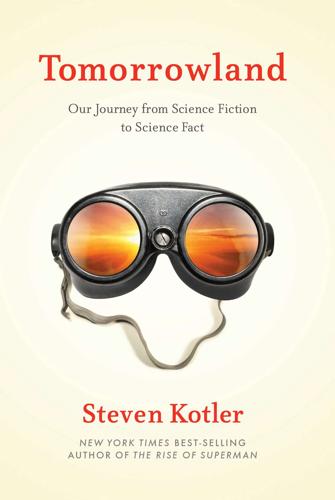
Tomorrowland: Our Journey From Science Fiction to Science Fact
by
Steven Kotler
Published 11 May 2015
In fact, in April 2012 — and with backing from the likes of Google cofounder Larry Page, Google executive chairman Eric Schmidt, and Virgin founder Sir Richard Branson — Peter Diamandis, creator of the XPRIZE, alongside Eric Anderson, CEO of Space Adventures Ltd. (the private space tourism company that flew Stephen Hawking into zero-G and sent billionaire Dennis Tito to the International Space Station), announced Planetary Resources Inc. (PRI), a newly formed asteroid mining company. This time, it was Comedy Central host Jon Stewart who summed things up nicely: “Space pioneers going to mine motherfucking asteroids for precious materials!
…
ALSO BY STEVEN KOTLER The Angle Quickest for Flight West of Jesus A Small, Furry Prayer The Rise of Superman Abundance (with Peter Diamandis) Bold (with Peter Diamandis) Text copyright © 2015 by Steven Kotler All rights reserved. No part of this work may be reproduced, or stored in a retrieval system, or transmitted in any form or by any means, electronic, mechanical, photocopying, recording, or otherwise, without written permission of the publisher. Published by Amazon Publishing, New York www.apub.com Amazon, the Amazon logo and Amazon Publishing are trademarks of Amazon.com, Inc. or its affiliates.
…
“You need to examine the facts,” says Eric Anderson, “No laws of physics need to be reconfigured to mine an asteroid. There are no technology gaps. Truthfully, building a North Sea oil platform is a lot harder.” And, suddenly, Houston, we have proof of concept. 3. So what will this concept look like in our lifetime? Already, Planetary Resources has raised over $1.5 million to help launch the ARKYD 100 space telescope, which is specifically designed to hunt for near-Earth asteroid mining prospects. There’s also President Obama’s announcement that he wants to land astronauts on an asteroid by 2025. Teams at Johnson Space Center in Houston and the Jet Propulsion Laboratory in Pasadena are hard at work on this goal, so a government-sponsored first step is not out of the question.
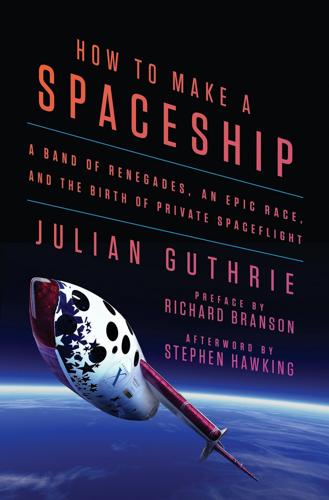
How to Make a Spaceship: A Band of Renegades, an Epic Race, and the Birth of Private Spaceflight
by
Julian Guthrie
Published 19 Sep 2016
Stephen Hawking Theoretical physicist, cosmologist, and bestselling author of six science books and five children’s books coauthored with his daughter, Lucy Peter Diamandis displaying the model of an atom he made for his first grade science fair. He was upset he took only second place. Peter Diamandis Peter with his dad, Harry, mom, Tula, and sister, Marcelle. Peter Diamandis Six-year-old Peter Diamandis playing doctor with a kit his parents gave him. He checks his mother’s vital signs. Peter Diamandis Peter when he first met Arthur C. Clarke at the United Nations’ 1982 Unispace conference in Vienna, Austria. Peter Diamandis Peter (right) and his rocket-making friend, Billy Greenberg, with their homemade Mongo rocket.
…
., 127 Dallas Area Rocket Society, 188, 270 Danforth, William, 169 Darlington, Dick, 155–56 DARPA (Defense Advanced Research Projects Agency), 107, 115n Da Vinci Project, 274, 296, 371 Davis, Noel, 171 DC-X (Delta Clipper Experimental), 117, 204, 271, 272, 294 De León, Pablo, 181–83, 275–76, 295, 296, 371, 399, 410 Deli Haus (Boston), 87, 89–90, 110, 112 DeLong, Dan, 128–29, 133, 135 Demonstrator, 365–67 Der Red Max, 21 Diamandis, Dax, 406 Diamandis, Harry, 15, 19, 37, 204, 375, 400 Diamandis, Jet, 406 Diamandis, Kristen Hladecek, 375, 385–86, 399–400, 406 Diamandis, Marcelle, 16, 18, 95, 375 Diamandis, Peter H. childhood love of space, 17–19, 20–26 Apollo 11 landing, 11–17, 403 companies of, 405–6 Angel Technologies, 114–21, 122, 154 Blastoff Corporation, 224–38 International Microspace, 95, 98–113, 115, 117, 122, 127, 230, 402 Space Adventures, 208–9, 210, 239, 409 ZERO-G, 122, 127–28, 208, 240, 299, 374, 406, 413–14 death and memorial for Hawley, 149–52 early life of, 17–26 education of Great Neck North High School, 21–23, 28 Hamilton College, 27–29, 33, 34–37 Harvard Medical’s HST program, 64–69, 90, 94–100 MIT, 29, 30–33, 37, 38–44, 47–49, 64, 69–75 faith and truth and, 87–90 ISU and, 74–76, 90–94, 95–98, 100, 149–50, 177, 182 SEDS and, 39–45, 64–65, 68, 74, 101, 104, 122, 212 at Smithsonian Air and Space Museum, 139–41, 149–52, 402–4 SpaceShipOne and flight tests, 2, 7, 341–42 flight day one, 360, 376–82, 385–86 flight day two, 391–92, 397 unveiling, 314–15, 317, 318 at UN Space Conference, 44–47 update on, 405–6 XPRIZE and, 236, 317–20 Ansari meeting, 298–301 Branson meeting, xiii, xv, 208–11 Erik Lindbergh’s anniversary flight, 264–65, 280–81, 285–86, 287–88 First USA Bank, 214–15, 292–93 formal announcement, 164, 169–73 fund-raising and pitches, 133–34, 203–4, 206–15, 243, 256, 293, 373–74 hole-in-one contract, 292–302, 374–75 Lindbergh meetings, 139–45, 147–49 Montrose gathering, 125–33, 301–2 Musk meeting, 238–44 Diamandis, Tula, 37, 72 Apollo 11 landing, 15, 16–17 early life of Peter, 19–20 MIT visit, 30–32 SpaceShipOne and, 375, 381–82, 400 XPRIZE and, 204 Diet Rite, 374 Direct injection, 230–31 Disney, Walt, 52–53, 348 Dobronski, Joe, 262, 264–65, 286 Dole, Elizabeth, 91 Dolphin, 130–31 Doom 3 (video game), 179, 369 Dorrington, Graham, 371 Dot-com bubble, 203–4, 224–25, 232–33, 318 Dovey Manufacturing, 155 Draper, Charles Stark “Doc,” 32–33, 43 Draper Lab, 32–33, 43–44 Drexler, Eric, 41, 121–22 EAc (Environmental Aeroscience Corporation), 306–7, 352n Earhart, Amelia, 155 Earth-fixed velocity, 13n Earthrise, 147–48 Earthwinds, xiv Eaton, Phil, 271–72 EBay, 225, 238, 271 Edwards Air Force Base, 4, 50, 51, 53, 157, 251, 327, 336, 347, 375–76 Ehrlich, Paul, 148 Eid, Jean-Michel, 294 Einstein, Albert, 89, 90 Electrogastrographs, 39 Elias, Antonio, 107, 314 Ellison, Harlan, 227 Emmons Glacier, 79–80, 82 Enbrel, 218–19, 259 Engines of Creation (Drexler), 121–22 Enterprise, USS, 326 Enterprise Rent-a-Car, 207, 214 Error-correcting systems, 186–87 Escape from Gravity, 406 Estes rocket kits, 21, 25, 74, 145, 178, 222 European Space Agency (ESA), 91, 182n, 411 Evans, Bruce, 55, 58–59, 193–94 Evans, Ronald, 20 Evergreen State College, 80 Everything Club, 21–22 Experimental Aircraft Association, 155–56 Explorers Club, 168 Faget, Maxime “Max,” 314, 316–17 Falcon 9, 319 Fate Is the Hunter (Gann), 60, 147 Fazio, Giovanni, 96 Feather configuration of SpaceShipOne, 3, 6, 249–50, 253–54, 314, 316–17, 330, 344, 351, 383, 384, 396 Federal Aviation Administration (FAA), 251, 374 Office of Commercial Space Transportation, 168, 271, 340, 343–44, 347–48, 369 SpaceShipOne and, 336–37, 340, 343–44, 347–48, 349, 380–81, 385 Fédération Aéronautique Internationale, 61 Feeney, Brian, 184, 274, 293, 296, 371 Feynman, Richard, 29n, 31, 63, 128n, 131–32 Feynman Prize, 121 Fields, Bert, 228 Finnegans Wake (Joyce), 29n First-person shooter games, 178, 178n First-stage cutoff, 13, 13n First USA Bank, 214–15, 292–93 Fitzgerald, F.
…
Peter Diamandis Peter (right) and his rocket-making friend, Billy Greenberg, with their homemade Mongo rocket. Peter Diamandis Peter (right) and Todd Hawley clasping hands when Peter turned over the SEDS chairmanship to Todd at George Washington University. Peter Diamandis Peter and his father upon Peter’s graduation from Harvard Medical School in 1989. Peter Diamandis At a gathering (the “John Galt meeting”) of rocket makers and space enthusiasts in Montrose, Colorado, Peter and others shared ideas for getting to space without NASA’s help. This was where the idea for the XPRIZE began to take shape. Peter Diamandis The “build a rocket” brainstorming session in Montrose drew a half dozen commercial space enthusiasts to the home of David and Myra Wine.

Exponential Organizations: Why New Organizations Are Ten Times Better, Faster, and Cheaper Than Yours (And What to Do About It)
by
Salim Ismail
and
Yuri van Geest
Published 17 Oct 2014
He has consulted for Google, ING Bank, Vodafone Group, Adidas Global, Philips Global, Heineken Global, Friesland Campina, Samsung and MIT, and was a key member of the Topteam Creative Industry within the Dutch Ministry of Economic Affairs, Agriculture and Innovation for two years. PETER H. DIAMANDIS is a serial entrepreneur having co-founded fifteen companies, most notably the X Prize Foundation, Singularity University and Planetary Resources. He has a molecular biology and aerospace engineering degree from MIT and an MD from Harvard. He is also the co-author of the New York Times bestselling book, Abundance: The Future Is Much Better Than You Think, which is recommended pre-reading for those interested in Exponential Organizations. CNN and Fortune just named Peter Diamandis one of “The World’s 50 Greatest Leaders.” Acknowledgements (from Salim, Yuri and Mike) We’ve realized it doesn’t just take a village to complete a project like this—it takes a whole town.
…
., & Wenting, R. (2012). Groeimodellen: Creëer nieuwe business. Van Duuren Management. About the Authors This book is a joint collaboration involving Salim Ismail, Michael S. Malone and Yuri van Geest, with key ideas and framing provided by Peter Diamandis, along with consultation from the faculty of Singularity University. Ismail and Diamandis became business partners when they founded Singularity University, an institution created to study the impact of exponentially growing technologies on companies, industries and humanity’s grand challenges. Van Geest has been involved in the collaboration, writing, researching and thinking of this book for almost the entire three years of its creation.
…
Exponential Organizations Why new organizations are ten times better, faster, and cheaper than yours (and what to do about it) Salim Ismail with Michael S. Malone and Yuri van Geest Foreword and Afterword by Peter H. Diamandis Copyright Diversion Books A Division of Diversion Publishing Corp. 443 Park Avenue South, Suite 1008 New York, NY 10016 www.DiversionBooks.com Copyright © 2014 by ExO Partners LLC All rights reserved, including the right to reproduce this book or portions thereof in any form whatsoever. For more information, email info@diversionbooks.com First Diversion Books edition October 2014 ISBN: 978-1-62681-358-8 Table of Contents Foreword Introduction The Iridium Moment Doubling Down Exponential Organizations PART ONE: Exploring the Exponential Organization Chapter One: Illuminated by Information Chapter Two: A Tale of Two Companies Chapter Three: The Exponential Organization Massive Transformative Purpose (MTP) Staff on Demand Community & Crowd Algorithms Leveraged Assets Engagement Chapter Four: Inside the Exponential Organization Interfaces Dashboards Experimentation Autonomy Social Technologies Chapter Five: Implications of Exponential Organizations 1.
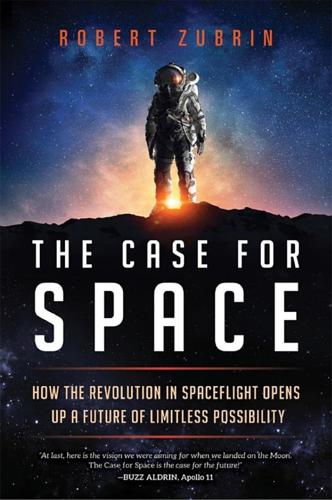
The Case for Space: How the Revolution in Spaceflight Opens Up a Future of Limitless Possibility
by
Robert Zubrin
Published 30 Apr 2019
For every kilogram of platinum shipped back to Earth, thirty tons of excellent nickel-alloy steel would become available to build industries, spacecraft, habitats, and even free flying cities for multitudes of new branches of human civilization that will develop in space. CLAIMING ASTEROIDS The commercial potential of asteroid mining is so enormous that several start-ups have already been formed with the goal of pursuing the opportunity for profit. Among the leaders are Planetary Resources, begun by Peter Diamandis, Eric Anderson, and Chris Lewicki with backing by several Google magnates and other high rollers, and Deep Space Industries, founded by veteran space entrepreneurs David Gump and Rick Tumlinson, with noted asteroid expert Professor John Lewis serving as chief scientist. However, despite such strong founding groups, the hopes of these companies to realize their bold plans appear quite problematic, as there is currently no technically feasible way to mine the precious metals that exist in the asteroid belt and return them to Earth for sale.
…
In the 1990s, he decided to take on the central challenge of opening the space frontier—the creation of reusable space launch systems. After reading a biography of Charles Lindbergh, Diamandis had been impressed by the fact that Lindbergh had flown the Atlantic—and eight others had been motivated to try—for the possibility of winning a prize. Furthermore, the estimated $400,000 (in 1920s money) collectively spent to win the Orteig Prize was much greater than the $25,000 prize fund itself. Not only that, the intellectual impact resulting from Lindbergh's spectacular achievement had resulted in the rapid expansion of the airline industry shortly thereafter. Diamandis reasoned: if prizes had worked to unleash aviation, why not try the same approach for space?
…
As the capability for both exploration and development of space resources thus advanced, the value of both existing property claims and those obtainable in the future would increase, thereby expanding the financial resources available and accelerating space development even more. The leaders and backers of companies like Planetary Resources and Deep Space Industries need to lobby hard to obtain legislation that would set up a legal regime for space property claims of this sort. The rest of us need to support its passage. Because if it does, massive new financial forces will be mobilized that will further the exploration and development of space.

Live Work Work Work Die: A Journey Into the Savage Heart of Silicon Valley
by
Corey Pein
Published 23 Apr 2018
Like a lot of lucky, wealthy people, Diamandis had developed some curious ideas about why some people are rich and others poor, and about the secrets to success in business. “You can become a billionaire by doing anything. Find what is in your heart and soul, and do that,” he told the Summitgoers. Apparently, Diamandis had scoured his own soul and found a passion for the extractive industries. Where others looked to the stars and felt wonder, Diamandis saw spoils ripe for plunder. “The Earth is a crumb in a supermarket filled with resources,” he said. His asteroid mining venture, Planetary Resources, was an effort to gain first-mover advantage on exploiting the mineral wealth of places beyond earth.
…
No one who graced the stage at the Summit spoke more directly to this underlying money lust than SU cofounder Peter Diamandis. Although Ray Kurzweil was the university “chancellor,” he seemed to be more of a figurehead. It was Diamandis who had pitched the idea for SU to Kurzweil, who in turn pitched it to the Google guys, who supplied seed money. With his finely combed hair, his wide smile, and his smartly tailored suit, Diamandis stood out next to the comparatively unpolished SU faculty. He was a dashing debate society president among chess club dorks, a born closer whose optimism knew no bounds. A Harvard- and MIT-educated medical doctor and aerospace engineer, Diamandis “gave up on NASA” and resolved to become the Commodore Vanderbilt of outer space.
…
“I have very little faith in politicians, but I have a lot of faith in technology,” Jacobstein told me. This was a view widely shared by SU speakers, faculty, and leadership. A man in the audience had a question for Diamandis. “In the past we had revolutions,” the man asked. “What are the new solutions?” The answer that came back, unsurprisingly: technology. Technology was the solution, and it could also constitute a kind of revolution. “Governments don’t get disrupted gracefully,” Diamandis said. He had some strong feelings about politics and the failures of “representative democracy” as distinct from “actual democracy,” whatever he meant by that. But if there was one clear takeaway from his remarks, it was his contempt for any political action that might impede corporate profits, such as conservation and regulation.

The Future Is Faster Than You Think: How Converging Technologies Are Transforming Business, Industries, and Our Lives
by
Peter H. Diamandis
and
Steven Kotler
Published 28 Jan 2020
Finally, Peter wants to say thank-you to Dan Sullivan and the Strategic Coach team for the encouragement, wisdom and support on creating a 10x impact on the world. More from this Series Bold Abundance ABOUT THE AUTHORS © MATTHEW RUTHERFORD Peter H. Diamandis is a New York Times bestselling author and the founder of more than fifteen high-tech companies. He is the CEO of the XPRIZE and executive chairman of Singularity University, a Silicon Valley–based institution backed by Google, 3-D Systems, and NASA. He is cochairman of Planetary Resources, Inc., and the cofounder of Human Longevity, Inc. Diamandis attended MIT, where he received his degrees in molecular genetics and aerospace engineering, and Harvard Medical School, where he received his MD.
…
You benefit from our highly experienced team of board certified and licensed physicians, geneticists, and expert scientists who use innovative technology to bring about the next big shift in quality of life. For more information, go to www.HumanLongevity.com. Keynotes: Hiring Peter Diamandis and/or Steven Kotler Both Peter and Steven enjoy speaking about their work in Abundance, BOLD, and The Future Is Faster Than You Think. They both do a limited number of select keynote speaking engagements ever year. For more information on hiring Peter Diamandis, go to: www.diamandis.com/speaking For more information on hiring Steven Kotler, go to: www.stevenkotler.com/speaking ACKNOWLEDGMENTS The Future Is Faster Than You Think has benefited greatly from the generous wisdom of a great many people.
…
CLICK HERE TO SIGN UP Already a subscriber? Provide your email again so we can register this ebook and send you more of what you like to read. You will continue to receive exclusive offers in your inbox. I dedicate this book to all who have mentored and coached me during my life: Harry P. Diamandis, Tula Diamandis, Frank Price, David C. Webb, Paul E. Gray, David E. Wine, Gregg E. Maryniak, Ayn Rand, Art Dula, Robert Heinlein, Byron K. Lichtenberg, Sylvia Earle, Gerard K. O’Neill, Arthur C. Clarke, John T. Chirban, Laurence R. Young, Martine Rothblatt, Charles Lindbergh, Tom Velez, Stuart O. Witt, S.
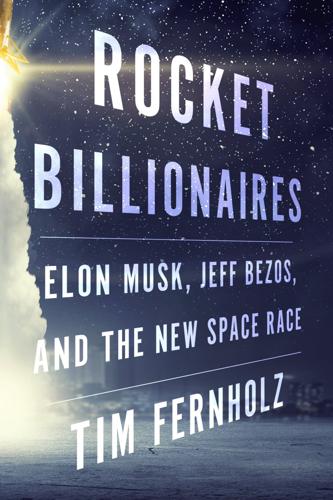
Rocket Billionaires: Elon Musk, Jeff Bezos, and the New Space Race
by
Tim Fernholz
Published 20 Mar 2018
James Cantrell, who had spent the past decade as a liaison between the US and Russian space programs, cleaning up after the fall of the Cold War, and developing never-launched joint missions to Mars, acted as a consultant, offering advice on obtaining surplus Soviet rockets. Just out of school, BlastOff’s marketing manager, George Whitesides, would later be the NASA chief of staff and CEO of Virgin Galactic. One engineer, Chris Lewicki, would go on to spend a decade at NASA’s Jet Propulsion Lab before founding the space mining company Planetary Resources. Other engineers on the team would be key early employees at Blue Origin or SpaceX. When BlastOff’s mission timeline was revealed—a moon landing the next summer, in 2001, ideally on July 4, followed by an initial public offering in the fall to cash in on what would be a signal event in the history of technology venture capital—the aerospace types began to understand the gap between perception and reality in the dot-com world.
…
See also McDonnell Douglas NASA space taxi program bids, 112–13 reusable (X-15), 16, 215–16 SpaceX challenges, 78, 107 Orbital Sciences Corporation, 59, 206–7, 228 Antares, 121, 206–7, 228 Antares explosion, 206–8 Cygnus, 121, 206, 208 NASA space taxi program, 121, 137 Orlando Sentinel, 142 P; PayPal, 2, 18, 45, 66 Pegasus, 235 Peregrine vehicle, 242 Pettit, Donald, 149, 157–58, 164 PICA-X, 156 Planetary Resources, 56 Planetary Society, 124 Powell, Colin, 75 Pratt & Whitney Rocketdyne, 140 Putin, Vladimir, 10, 181, 183, 185 Q; Qualcomm, 51, 234 R; Ramon, Ilan, 73 RAND Corporation, 38 Raptor engine, 243–44 Rasky, Dan, 156 RD-180 (Russian engine), 59, 182, 190 injunction on imports, 187–88 McCain bill banning imports, 190 Reaction Research Society, 51, 63 Reagan, Ronald, 19, 53 Red Mars (Robinson), 46 Ressi, Adeo, 59 reusable rockets, 195–96, 241, 250.
…
The prize had been created in the spirit of the great aviation challenges of the 1930s. Just as Charles Lindbergh flew across the Atlantic, spurred by a big cash prize, before paying passengers existed, so, too, did the donors behind this prize hope to goose space commerce. To fund the prize, the prize’s organizer, Peter Diamandis, called on the Ansaris, a wealthy Iranian family that had fled to the United States during the revolution. In the early nineties, Anousheh Ansari, then an employee of MCI, convinced her husband and brother-in-law to start a new company called Telecom Technologies Inc., which provided software to manage the growth of digital networks.
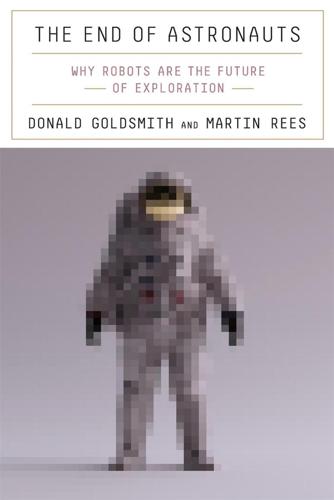
The End of Astronauts: Why Robots Are the Future of Exploration
by
Donald Goldsmith
and
Martin Rees
Published 18 Apr 2022
The company enjoyed a good run of publicity until its acquisition in 2019 by Bradford Industries, which announced that it would concentrate on space propulsion systems rather than asteroid mining. A few months earlier, Planetary Resources, a United States company founded in 2009 to create a trillion-dollar business in asteroid mining, became part of ConsenSys, which focuses primarily on bringing blockchain technology into space, presumably to avoid all governmental interference.11 During the previous decade, Planetary Resources had deployed significant amounts of capital obtained from venture-capital luminaries such as Charles Simonyi (the only one of the seven wealthy individuals who have paid for trips to the International Space Station to have made two visits) and the founders of Google in order to launch two experimental satellites to search for the most promising asteroids.
…
On ARM’s history, see “Asteroid Redirect Robotic Mission: ARRM,” Jet Propulsion Laboratory, accessed August 15, 2021, https://www.jpl.nasa .gov/missions/a steroid-redirect-robotic-mission-arrm. 10. “Deep Space Industries,” Wikipedia, accessed August 15, 2021, https://en .wikipedia.org/wiki/Deep_Space_Industries. 11. Alan Boyle, “After Buying Planetary Resources, ConsenSys Sets Its Space Ideas Free—but Will Sell Off the Hardware,” GeekWire, May 1, 2020, https://www.geekwire.com/2020/ buying-planetary-resources -consensys-gives-away-science-asteroids-will-sell-rest/. 12. Sonnie Bailey, “ ‘The Dinosaurs Became Extinct Because They D idn’t Have a Space Program’: Redundancy Is an Important Risk Management NOT E S TO PA G E S 1 0 6 – 1 1 0 · 169 Strategy,” NZ Wealth and Risk, August 28, 2015, https://wealthandrisk .nz/redundancy/.
…
Henry, 40 Olympus Mons, 92 O’Neill, Gerard, 106–109, 111 Operation Paperclip, 3 Opportunity, 84, 114, 116 orange soil, 54 orbits, around Earth, 1–6, 15, 18, 23–25, 28–35, 37, 40–45, 50; geostationary, 25, 28; around Mars, 17, 37, 76–78, 81, 84, 86, 116; around moon, 51–53, 55, 59, 66, 67; around other stars, 73; overcrowding of, 45–48; around sun, 18, 26, 94–97, 100–103, 105, 108, 113 Orion spacecraft, 119 OSIRIS-Rex, 96, 97 Outer Space Treaty, 66, 71, 136–138, 140 Pantheon, 30 Peaks of Eternal Light, 57, 147 Peijian, Yi, 124, 126 Perseverance rover, 13, 18, 62, 78–81, 87, 116 Phobos, 27 Planetary Resources Corporation, 101 Plate tectonics, 56 polls, 19–21, 24 Polyakov, Valery, 33 Polynesians, 12 Psyche, 100 public attitudes t oward space exploration, 2–4, 6, 8–13, 16–21, 30, 32, 76, 83, 92, 94, 102, 104, 106, 128, 147 Purdue University, 21 Quegiao, 125 radiation damage, 29, 43–46, 60, 69, 70, 84, 85, 118 Redstone Arsenal, 3 regolith, 61, 96, 143 robots, comparison with humans, 64, 65, 115, 146, 149; on Mars, 79, 81–83, 86, 93, 94, 102; on moon, 51–53, 59, 61–67; for space manufacturing, 6, 35–37 Roscosmos, 129 Ryumin, Valery, 40 Sagan, Carl, 71, 72 sample return, from asteroids, 24, 96, 97; from Mars, 14, 77, 80, 81, 127, 128, 147; from moon, 52–54, 56, 63, 125, 128, 139 Schmitt, Harrison, 54, 59, 61, 62 Schwartz, James, 11 Shackleton crater, 57, 129 Shorty crater, 54 Simonyi, Charles, 101 SKA (Square Kilometer Array), 59 SLS, 119, 120 Smart-1, 51 Smith, O.
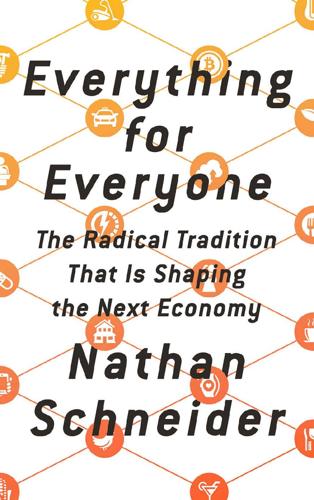
Everything for Everyone: The Radical Tradition That Is Shaping the Next Economy
by
Nathan Schneider
Published 10 Sep 2018
Richard Feloni, “Why Mark Zuckerberg Wants Everyone to Read the Fourteenth-Century Islamic Book The Muqaddimah,” Business Insider (June 2, 2015); Mark Zuckerberg, “Building Global Community” (February 16, 2017), facebook.com/notes/mark-zuckerberg/building-global-community/10154544292806634. 11. I have been a guest speaker at Singularity University’s Global Solutions Program. 12. Peter Diamandis, “I Am Peter Diamandis, from XPRIZE, Singularity University, Planetary Resources, Human Longevity Inc., and More. Ask Me Anything,” Reddit AMA discussion (July 11, 2014), reddit.com/r/Futurology/comments/2afiw5/i_am_peter_diamandis_from_xprize_singularity/ciulffv. 13. Kevin Roose, “In Conversation: Marc Andreessen,” New York (October 19, 2014); Sam Altman, “Technology and Wealth Inequality” (January 28, 2014), blog.samaltman.com/technology-and-wealth-inequality. 14.
…
Singularity University doesn’t grant degrees in the normal sense; it is a kind of secular seminary devoted to the faith that technology is the harbinger of human progress, until it outwits us altogether. Students pay for the experience with an ownership stake in the startups they create there. “Be exponential,” Singularity’s slogan reminds them.11 In June 2014, the institution’s co-founder and chairman, Peter Diamandis, a space-tourism entrepreneur, convened a gathering of fellow tech luminaries to discuss the conundrum of automation-caused unemployment. “Tell me something that you think robots cannot do, and I will tell you a time frame in which they can actually do it,” claims Federico Pistono, a young Italian who spoke there.
…
Among other accomplishments, Pistono had written a book called Robots Will Steal Your Job, but That’s OK. At the Singularity meeting, he was the chief proponent of universal basic income, an idea that at the time still seemed novel. He cited recent basic-income experiments in India that showed promise for combating poverty among people the tech economy has left behind. Diamandis later reported having been “amazed” by the potential.12 That year, also, celebrity investor Marc Andreessen told New York magazine that he considered basic income “a very interesting idea,” and Sam Altman of the elite startup accelerator Y Combinator called its implementation an “obvious conclusion.”13 Those were just the early salvos.
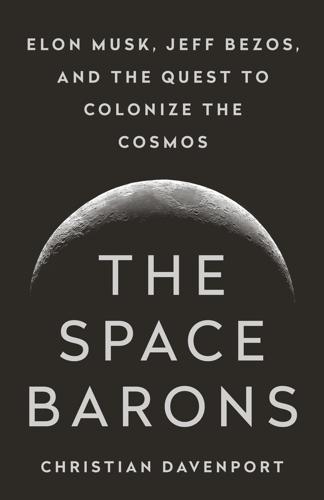
The Space Barons: Elon Musk, Jeff Bezos, and the Quest to Colonize the Cosmos
by
Christian Davenport
Published 20 Mar 2018
Musk wasn’t the only entrepreneur looking to cash in on the new satellite technology. OneWeb, a company backed by Richard Branson, also planned to put up a constellation of hundreds of miniature satellites that it said would connect the billions of people without Internet access to the digital economy. Google executives Larry Page and Eric Schmidt invested in Planetary Resources, which planned to mine asteroids. Filled with precious metals, the asteroids are the “diamonds in the rough of the solar system,” Eric Anderson, the company’s cofounder, told CNBC. Asteroids have “rare metals, industrial metals and even fuels,” he said, “so we could create gas stations in space that would enable us to travel throughout the solar system just like Star Trek.”
…
Daniel, 28 Max-Q, 218 McNeil, Wilfred, 61 media Musk as cult figure, 204–206 Musk’s rivalry with Bezos over orbital launch, 233–235 Sex Pistols scandal, 105 See also Twitter Melvill, Mike, 79–81, 83, 87–95, 120 Melvill, Sally, 89–92, 94 Mercury program, 84, 173, 226 Meyerson, Rob, 170, 180 Mica, John, 124–125 Mishap Investigation Board, 136 Mitchell, Edgar, 275 Montgomery, James, 110 moon colonization and missions Bezos’s plan, 273–274 Musk’s plans for civilian passengers, 272–273 promoting commercial interest in, 109–113 moon landing, 255 George Mueller’s role in, 47 inspiring commercial moon travel, 110 Launch Pad 39A, 172 young Bezos’s interest in, 62–63 Mosdell, Brian, 149–153, 163, 165–166 Mount Washington, New Hampshire, 119 Mueller, George, 47 Mum’s the Word (Branson), 103 Museum of Pop Culture, Seattle, Washington, 84–85 Musk, Elon, 3–7 as cult figure, 204–207 Bezos’s conception for space travel, 258–259 Bezos’s patent for rocket recovery, 199–200 booster rocket trial, 2 concerns over asteroid collisions, 37–38 Dragon spacecraft early entrepreneurialism, 35–36 Explorers Club, 198 explosion, 240 Falcon 1’s flawless test, 143–144 Falcon 9, 164–166, 227–230 family and background, 122–123 financial investment, 254 Grasshopper’s successful launch and landing, 224 International Astronautical Congress address, 237–239, 242, 245–246 launch technology, 270–271 lunar base plans, 272–273 management style, 151–156 Mars Oasis, 39–40 NASA contracts, 47–50 NASA’s data gathering on, 45–47 on Bezos’s successful launch of a reusable rocket, 223–224 on ‘space’ versus ‘orbit,’ 224–225 passion for aviation and space, 123–124 Personal Spaceflight Federation, 115–118 rivalry with Bezos, 229–230, 233–235 shuttles to the space station, 270–271 SpaceX explosion, 270 United Launch Alliance merger, 53–54 See also SpaceX NASA abandoning Launch Pad 39A, 173–174 Ares rockets, 156–157 ARPA involvement in, 129 asteroid collisions, 36–37 Beal advocating for private space programs, 32–33 Bezos on, 21 birth of the space program, 171–172 commercial crew program, 209–211 competition over Launch Pad 39A, 181–184 Constellation program, 139–140, 156–161, 244, 246 COTS award, 137–141 data gathering on SpaceX, 45–47 decline of the human space program, 85–86, 116–117, 246–247 drawdown following Apollo programs, 116–117, 160–162 hazards of space flight, 120–121 hiatus in human spaceflight, 208–209 immortal youth, 121 increasing reliance on the commercial sector, 157–159 ISS shuttles, 38–39 Mars exploration, 38 Obama on deep space exploration, 161–162 private company contract bids, 47–50 Saturn V rocket recovery, 189 SEDS members, 70 shuttle retirement, 172–173 SLS/Orion program, 244–245 SpaceX Dragon, 144–145, 175–178, 270–271 SpaceX Falcon 1 development, 132–134, 155–156 SpaceX partnership for Mars flights, 238, 244–245 squeezing out the private sector, 33–34 success of SpaceShipOne, 96 young Jeff Bezos’s essay for, 65–66 National Air and Space Museum, 42, 73, 116 National Medal of Science, 47 national security concerns, 241, 268 National Transportation Safety Board, 214, 231 Never Mind the Bollocks (album), 105 New Armstrong rocket (Blue Origin), 263 New Glenn rocket (Blue Origin), 261–263 New Shepard rocket (Blue Origin), 6–7 apogee, 224 awards, 258 competition over Launch Pad 39A, 183–184 creation of, 75 designing manned ships, 255, 257 engine test, 180 New Glenn and New Armstrong, 262–263 self-guiding system, 190 test to the Kármán line, 221–223 Very Big Brother, 261 Niagara Falls, 120 Nixon, Richard, 47 Northrop Grumman, 51–53 Obama, Barack, 6, 156–158, 160–164, 244, 274 Oberstar, James, 124 Ocean Stalwart (research ship), 191 O’Keefe, Sean, 45, 47 O’Neill, Gerard, 67–71, 74–75 OneWeb, 249 Orbital Sciences, 210 Orion spacecraft (Lockheed Martin), 139–140, 159–160, 162, 244–245 Orszag, Peter, 159 Orteig Prize, 80 pad escape test, 179–180 Page, Larry, 249 Pan Am Airlines, 109–110 passengers in space, 255–261, 265–266, 268, 270–271 Patrick, Nicholas, 256–257 PayPal, 36 Perot, H. Ross, 73 Personal Spaceflight Federation, 117–119, 125–126 Pettit, Don, 175 Pike, John, 137 Pioneer missions, 223 Pitt, Brad, 112 planetary colonization. See Mars colonization and missions; moon colonization and missions Planetary Defense Coordination Office, 37 Planetary Resources, 249 poker, 27–30 Polk, Kevin, 70–71 Poore, Steve, 192 Princeton University, 67–71 prison break (New Mexico), 11, 16–17 private space programs, 32–33. See also Beal Aerospace; Blue Origin; SpaceX; United Launch Alliance; Virgin Galactic Propulsion Module 2, 168–169 Purdue University, 249–250 railgun technology, 23 rapid unscheduled disassembly (RUD), 203 Rather, Dan, 68 real estate market: Andy Beal’s fortune, 30–31 regulating the private space industry, 118, 124–126, 153 remotely operated vehicles (ROVs), 193, 197–198 Ressi, Adeo, 38 reusable launch vehicles (RLVs), 199–200 reusable rockets Blue Origin’s successful launch and landing, 222–224 developing spaceplanes and shuttles, 268–269 fueling private funding for SpaceX, 249 history of, 25 importance of, 24 landings, 3 launch technology, 270–271 Saturn V rocket recovery, 190–191 Reynolds, Alastair, 76 risk as part of the American way, 122–124 rocket technology Beal advocating for private space programs, 32–33 Beal Aerospace, 30–32 Bezos-Musk discussions over rocket architecture, 55–57 Bezos’s fascination with, 21–24 Blue Origin’s development stages, 261–263 Musk’s Falcon 1 rocket unveiling, 42–44 Musk’s goal of improving launch capability and reliability, 40–41 Musk’s projected Mars travel, 242–245 Musk’s rivalry with Bezos over orbital launch, 229–230, 233–235 New Shepard’s self-guiding system, 222–223 origins and growth of SpaceX, 41–43 See also specific rockets and programs Rocketplane Kistler, 137, 140–141 Rohrabacher, Dana, 245 Rolling Stones, 106 Rose, Charlie, 26, 75 Russia Atlas V rocket, 206 costs of the space program, 160 decline of NASA programs, 157–158 Musk’s search for rockets, 40 shuttle service, 173 Rutan, Burt, 79–90, 92–94, 96, 108, 112, 116, 212–213 sabotage accusations: SpaceX explosion, 242 safety concerns Branson’s trans-Atlantic balloon flight, 101–102 informed consent standards, 118–119 Mars travel, 243–244 people’s lack of concern over space travel safety, 113 regulating the emerging commercial industry, 118 space shuttle disasters, 117 SpaceShipOne, 93 Tuckerman Ravine, 119 See also death Sarsfield, Liam, 45–48 satellite technology Beal Aerospace, 31–32 Defense satellite launch contracts, 52–54 launching infrastructure and technology, 268–269 national security responsibilities, 52–53 shrinking size and increasing affordability of satellites, 249 SpaceX explosion destroying satellite cargo, 239–241 Sputnik launch, 59–60 surveillance, 267–268 tracking asteroid collisions, 36–37 Saturn V rocket, 66, 129, 172, 188–192 Scaled Composites, 231 creation of, 80 kinks in the SpaceShipOne design, 93 Melvill’s SpaceShipOne test flight, 87–91 pilot rivalries, 82–83, 86–87 second flight of SpaceShipOne, 87 skepticism of, 86 SpaceShipOne crash, 82–84 SpaceShipTwo crash, 212–214 Virgin GlobalFlyer, 107 See also SpaceShipOne Schatz, Tom, 49 Schirra, Martin M., Jr., 173 Schmidt, Eric, 249 science fiction literature, Jeff Bezos’s love of, 64–65 Scott, Robert Falcon, 103 Seabed Worker (salvage ship), 187–188, 192–195 Seattle Museum of Flight, 254 self-guided rocket systems, 222–223 September 11, 2001, 52, 127 Seveneves (Stephenson), 24 Sex Pistols, 105 Shackleton, Ernest, 119 Shelby, Richard, 160 Shepard, Alan, 274 Shotwell, Gwynne, 48, 132–134, 137, 141–142, 154–155, 229, 240, 248 shuttle programs, 268–269 Columbia explosion, 41, 43, 96, 117 decline of NASA’s program, 85–86, 96, 172–173 increasing reliance on the private sector, 160–161 Musk’s interest in creating, 38–39 NASA’s Space Launch Initiative, 33 Siebold, Peter, 80–81, 86–89, 92–93, 95, 212–214 Simpson, Larry, 20, 24–25 60 Minutes (television program), 68, 106, 204 smoking, 63–64 social media Musk’s rivalry with Bezos over orbital launch, 229–230 rocket landings, 3 SpaceX explosion destroying satellite cargo, 239–241 SpaceX site, 204 See also Twitter sonar search of the ocean floor, 191–192 sonic boom, 22–23 Soviet Union Bezos’s acquisition of artifacts from, 72 Branson’s offer to go into space, 107 Sputnik launch, 59–60 space exploration and colonization as human survival, 32 asteroid habitation, 71 Blue Origin startup, 74 O’Neill’s proposal for, 67–71 See also asteroids; Mars colonization and missions; moon colonization and missions Space Launch Initiative, 33 Space Launch System (SLS), 244–245 space memorabilia, 251–252 space race, early, 235 ‘space’ versus ‘orbit,’ 224–225 spaceplane development, 79–80, 269.
…
Surprisingly, the answer will be inescapable: the best site is ‘somewhere else entirely.’” BY THE TIME Bezos was a senior, he became the president of the Princeton chapter of a student organization called Students for the Exploration and Development of Space. SEDS, as it was known, was started a few years before at MIT by Peter Diamandis, who wanted to increase awareness of space—and would eventually go on to found the Ansari X Prize, a 2004 contest between private companies to launch the first-ever commercial vehicle into space. At Princeton, SEDS was a small and somewhat lonely group. Despite the popularity of Star Wars, which had come out a few years before, space was not high on anyone’s list.
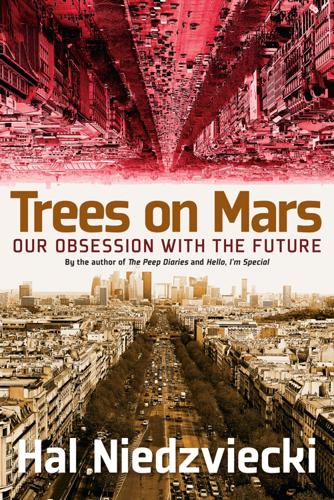
Trees on Mars: Our Obsession With the Future
by
Hal Niedzviecki
Published 15 Mar 2015
The XPrize Foundation was officially launched in 1994, then made its mark in 1996 when its founder, tech entrepreneur, and futurist utopian Peter Diamandis announced a $10 million prize to be awarded to the first group to build a private spaceship capable of carrying three people and flying two times within two weeks to the open space frontier. This prize was awarded in 2004 to a team funded by former Microsoft CEO Paul Allen. The fanfare of giving out the first prize was a public relations bonanza to Diamandis and his XPrize. Corporations lined up to sponsor further prizes including the 2007-2010 Progressive Insurance Automotive XPrize, the 2010-2011 Wendy Schmidt Oil Cleanup XCHALLENGE, and the ongoing 2007 Google Lunar XPrize.
…
Now nobody wants to be an Organization Man. We like start-ups, disrupters and rebels . . . people assume that big problems can be solved by swarms of small, loosely networked nonprofits and social entrepreneurs.”23 As just one example of this general shift, today we have a whole new conception of space travel. A company called Planetary Resources (backed by billionaire investors including Google’s Larry Page and Eric Schmidt) is promising to mine moons and asteroids. Richard Branson’s Virgin Galactic is offering $250,000 zero-gravity flights and has its eye on space tourism and suborbital trips with zero friction and gravity—New York City to Tokyo in two hours.
…
The message of the XPrize Foundation is as unambiguous as its crowdsourcing marketing exercises: this is how you get to the future. Ten years ago, we might have dismissed the XPrize as an outsized personal obsession, an outlier that doesn’t actually represent any kind of systemic change in how we think about future collectively and individually. After all, XPrize founder Diamandis is a pundit, speaker, TED Talk regular, and author of iconic Silicon Valley text Abundance: The Future is Better Than You Think. In other words, he’s a professional future-first prophet—someone who has made a career out of preaching that creativity leashed to science and technology will solve our problems.

Tools of Titans: The Tactics, Routines, and Habits of Billionaires, Icons, and World-Class Performers
by
Timothy Ferriss
Published 6 Dec 2016
” Spirit animal: Eagle * * * Peter Diamandis Dr. Peter H. Diamandis (TW: @PeterDiamandis, diamandis.com) has been named one of the World’s 50 Greatest Leaders by Fortune magazine. Peter is founder and executive chairman of the XPRIZE Foundation, best known for its $10 million Ansari XPRIZE for private spaceflight. Today the XPRIZE leads the world in designing and operating large-scale global competitions to solve market failures. He is also the co-founder (along with J. Craig Venter and Bob Hariri) and vice chairman of Human Longevity, Inc. (HLI); and the co-founder and executive chairman of Planetary Resources, a company designing spacecraft to prospect near-Earth asteroids for precious materials (seriously).
…
Though indebted to hundreds of people, I wish to thank here the many guests who have appeared on my podcast and who grace the pages of this book, listed in alphabetical order: Scott Adams (p. 261) James Altucher (p. 246) Sophia Amoruso (p. 376) Marc Andreessen (p. 170) Sekou Andrews (p. 642) Patrick Arnold (p. 35) Peter Attia (p. 59) Glenn Beck (p. 553) Scott Belsky (p. 359) Richard Betts (p. 563) Mike Birbiglia (p. 566) Alex Blumberg (p. 303) Amelia Boone (p. 2) Justin Boreta (p. 356) Tara Brach (p. 555) Brené Brown (p. 586) Bryan Callen (p. 483) Shay Carl (p. 441) Dan Carlin (p. 285) Ed Catmull (p. 309) Margaret Cho (p. 538) Paulo Coelho (p. 511) Ed Cooke (p. 517) Kevin Costner (p. 451) Whitney Cummings (p. 477) Dominic D’Agostino (p. 21) Alain de Botton (p. 486) Joe De Sena (p. 38) Mike Del Ponte (p. 299) Peter Diamandis (p. 369) Tracy DiNunzio (p. 313) Jack Dorsey (p. 509) Stephen J. Dubner (p. 574) Dan Engle (p. 109) James Fadiman (p. 100) Jon Favreau (p. 592) Jamie Foxx (p. 604) Chris Fussell (p. 435) Cal Fussman (p. 495) Adam Gazzaley (p. 135) Malcolm Gladwell (p. 572) Seth Godin (p. 237) Evan Goldberg (p. 531) Marc Goodman (p. 424) Laird Hamilton (p. 92) Sam Harris (p. 454) Wim Hof (p. 41) Reid Hoffman (p. 228) Ryan Holiday (p. 334) Chase Jarvis (p. 280) Daymond John (p. 323) Bryan Johnson (p. 609) Sebastian Junger (p. 420) Noah Kagan (p. 325) Samy Kamkar (p. 427) Kaskade (p. 329) Sam Kass (p. 558) Kevin Kelly (p. 470) Brian Koppelman (p. 613) Tim Kreider (p. 489) Paul Levesque (p. 128) Phil Libin (p. 315) Will MacAskill (p. 446) Brian MacKenzie (p. 92) Justin Mager (p. 72) Nicholas McCarthy (p. 208) Gen.
…
Novak (p. 378) Alexis Ohanian (p. 194) Amanda Palmer (p. 520) Rhonda Patrick (p. 6) Caroline Paul (p. 459) Martin Polanco (p. 109) Charles Poliquin (p. 74) Maria Popova (p. 406) Rolf Potts (p. 362) Naval Ravikant (p. 546) Gabby Reece (p. 92) Tony Robbins (p. 210) Robert Rodriguez (p. 628) Seth Rogen (p. 531) Kevin Rose (p. 340) Rick Rubin (p. 502) Chris Sacca (p. 164) Arnold Schwarzenegger (p. 176) Ramit Sethi (p. 287) Mike Shinoda (p. 352) Jason Silva (p. 589) Derek Sivers (p. 184) Joshua Skenes (p. 500) Christopher Sommer (p. 9) Morgan Spurlock (p. 221) Kelly Starrett (p. 122) Neil Strauss (p. 347) Cheryl Strayed (p. 515) Chade-Meng Tan (p. 154) Peter Thiel (p. 232) Pavel Tsatsouline (p. 85) Luis von Ahn (p. 331) Josh Waitzkin (p. 577) Eric Weinstein (p. 523) Shaun White (p. 271) Jocko Willink (p. 412) Rainn Wilson (p. 543) Chris Young (p. 318) Andrew Zimmern (p. 540) Contents FOREWORD ON THE SHOULDERS OF GIANTS READ THIS FIRST—HOW TO USE THIS BOOK * * * Part 1: Healthy Amelia Boone Rhonda Perciavalle Patrick Christopher Sommer Gymnast Strong Dominic D’Agostino Patrick Arnold Joe De Sena Wim “The Iceman” Hof Rick Rubin’s Barrel Sauna Jason Nemer AcroYoga—Thai and Fly Deconstructing Sports and Skills with Questions Peter Attia Justin Mager Charles Poliquin The Slow-Carb Diet® Cheat Sheet My 6-Piece Gym in a Bag Pavel Tsatsouline Laird Hamilton, Gabby Reece & Brian MacKenzie James Fadiman Martin Polanco & Dan Engle Kelly Starrett Paul Levesque (Triple H) Jane McGonigal Adam Gazzaley 5 Tools for Faster and Better Sleep 5 Morning Rituals that Help Me Win the Day Mind Training 101 Three Tips from a Google Pioneer Coach Sommer—The Single Decision * * * Part 2: Wealthy Chris Sacca Marc Andreessen Arnold Schwarzenegger Derek Sivers Alexis Ohanian “Productivity” Tricks for the Neurotic, Manic-Depressive, and Crazy (Like Me) Matt Mullenweg Nicholas McCarthy Tony Robbins Casey Neistat Morgan Spurlock What My Morning Journal Looks Like Reid Hoffman Peter Thiel Seth Godin James Altucher How to Create a Real-World MBA Scott Adams Shaun White The Law of Category Chase Jarvis Dan Carlin Ramit Sethi 1,000 True Fans—Revisited Hacking Kickstarter Alex Blumberg The Podcast Gear I Use Ed Catmull Tracy DiNunzio Phil Libin Chris Young Daymond John Noah Kagan Kaskade Luis von Ahn The Canvas Strategy Kevin Rose Gut Investing Neil Strauss Mike Shinoda Justin Boreta Scott Belsky How to Earn Your Freedom Peter Diamandis Sophia Amoruso B.J. Novak How to Say “No” When It Matters Most * * * Part 3: Wise BJ Miller Maria Popova Jocko Willink Sebastian Junger Marc Goodman Samy Kamkar Tools of a Hacker General Stanley McChrystal & Chris Fussell Shay Carl Will MacAskill The Dickens Process—What Are Your Beliefs Costing You?
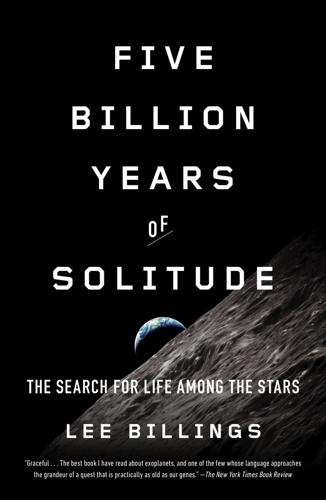
Five Billion Years of Solitude: The Search for Life Among the Stars
by
Lee Billings
Published 2 Oct 2013
If that happens in thirty, forty years, I’ll be too old to run TPF, but at least I’d have the money to make it personally happen.” Seager had signed on as a scientific advisor with a new venture, Planetary Resources, Inc., which would publicly debut two months after our conversation. The company was cofounded by two influential entrepreneurs of the emerging private spaceflight industry, Eric Anderson and Peter Diamandis; among its investors were Eric Schmidt and Larry Page of Google, and the billionaire space tourist and software developer Charles Simonyi. Other than Seager, its advisors included the Hollywood filmmaker and deep-ocean explorer James Cameron and a former U.S.
…
The business plan was, at its core, quite simple: locate and extract valuable resources from near-Earth asteroids, many of which are thought to contain deposits of platinum and other rare metals valued at trillions of dollars based on existing market prices. If, against long odds, the venture eventually proved successful, its core team stood to net multibillion-dollar profits. Planetary Resources planned to begin by building and launching small space telescopes, both to remotely “prospect” asteroids and to sell observing time to public and private parties. The next steps involved creating a low-cost interplanetary communications network and sending fleets of nimble robotic spacecraft to rendezvous with the most promising asteroids for closer inspection and eventual recovery of their rich resources.
…
., 15 Pennsylvania, 124, 128, 131, 133, 138, 143, 144 coal mining in, 125 Marcellus formation in, 126–30, 137, 138, 141, 144, 160 Pennsylvania State University, 127, 149, 153 Permian Period, 132 petroleum, 125–26, 137, 160, 184 Phanerozoic Eon, 138, 144 Phobos, 100 photolysis, 156, 172 photons, 72, 89, 115–16, 156, 191, 193–94, 201, 202, 213, 216, 237–38 photosynthesis, 29, 33, 131, 140–43, 154, 169, 175, 180–82 Pioneer, 239 Planetary Resources, Inc., 258–59 planetesimals, 2 planets: extrasolar, see exoplanets formation of, in our solar system, 2–3, 31, 109, 238 Kepler’s laws of motion of, 82–84 protoplanets, 2 transits of, 53 plants, 130–32, 143 photosynthesis in, 29, 33, 131, 140–43, 154, 169, 175, 180–82 plate tectonics, 30, 105, 111, 128, 140, 144, 169, 172, 176, 179, 229 Plato, 78–80, 82 Pluto, 110, 191, 239 polarization, 115–16 POLISH, 115–17 Pollack, James, 158 Pong, Christopher, 259 Precambrian period, 139–40, 144, 154, 238 precious metals, 105–6, 111 primordial soup, 19 Proceedings of the Royal Society, 84 Project Ozma, 11, 14, 47–48 prokaryotes, 139, 140, 143, 144 Proterozoic Eon, 140–44, 171, 179 protons, 88 protoplanets, 2 Proxima Centauri, 94, 97 psychohistory, 152 pyrite, 173 Pythagoras, 78, 82 Quaternary Period, 133 Queloz, Didier, 58 radio, 42–43, 45 Radio Astronomy Laboratory, 12 Recession, Great, 13, 106–7, 165, 196 recombination, 248, 249 red beds, 131 redox reactions, 168 redwood trees, 30–31, 106, 110 Regulus, 239 Renaissance, 22, 81 Reynolds, Ray, 155–56 Ricketts, Taylor, 74–77 Rittenhouse, David, 86 Road Map for the Exploration of Neighboring Planetary Systems, A, 211–12, 214, 221 rocket equation, 186 Sagan, Carl, 16, 19, 20, 24–25, 174, 239–42, 243 San Diego Air & Space Museum, 100 Sasselov, Dimitar, 226, 249 Saturn, 28, 83, 109, 191 Saturn rockets, 151–52, 187, 188, 202, 203 Schmidt, Eric, 258 Science, 104 scientific method, 78 Seager, Sara, 243–65 children of, 251–53, 156, 160–61, 264 ExoplanetSat project of, 256–57 “Next 40 Years of Exoplanets” conference of, 225–35, 263 as Planetary Resources advisor, 258–59 TPF work of, 225–28, 232–35, 249–53, 255–58, 262 Wevrick and, 244–49, 251–56, 264 Wevrick’s illness and death and, 253–56, 264, 265 Wevrick’s marriage to, 249 SETI (search for extraterrestrial intelligence), 9–14, 38, 41 Arecibo Observatory and, 41 Drake equation and, 16–25 first modern search by, 10–11 Green Bank conference of, 15–25, 27–28, 101, 167–68, 240 lack of funding for, 10–14 Laughlin’s view of, 99 NASA and, 11–12 Project Ozma, 11, 14, 47–48 SETI Institute, 12, 43 Allen Telescope Array of, 12–14, 41, 42 shales, see black shales Simonyi, Charles, 258 Smith, Matt, 259 Snowball Earth events, 142, 174, 179 solar eclipse, 119 solar system, 19, 87 evolution of, as viewed from stars, 238–39 formation of, 1–3, 31, 139 formation of Earth in, 2, 7, 20, 139, 173 formation of planets in, 2–3, 31, 109, 238 heliocentric model of, 79–82 measuring size of, 86 shell of light surrounding, 237–38 Soviet Union, 11 nuclear weapons and, 23 Soyuz rocket, 233–34 Venera 13, 50 Space Age, 48, 50, 87, 99, 112, 151 Space Interferometry Mission (SIM), 215 space junk, 13 Space Launch System, 204 space missions, 187–99 Apollo, 1, 50, 151, 187, 202, 212, 239 Ares V, 203 Atlantis, 185–87 ATLAST, 198, 203, 230 Challenger, 3, 188–89 Columbia, 189, 196 commercial providers and, 233–34, 258–59 Constellation program, 196, 198, 203, 204, 215, 221, 223 ExoplanetSat, 256–57 Galileo, 241–42 Great Observatories, 192, 197, 209 Hubble Space Telescope, 189–93, 195, 197–99, 205–7, 209, 218–19, 226 International Space Station, 187, 189, 197, 202, 207–8, 210 James Webb Space Telescope, 193–99, 202–4, 209, 215, 216, 218, 220, 225, 262 Kepler Space Telescope, 13–14, 53–54, 56, 62, 71–73, 98, 108–9, 166, 201, 225, 229–30, 263 to Mars, 187, 188, 196, 207, 221 to Moon, see Moon, missions to New Horizons, 239 OpTIIX, 207–8, 210 Pioneer, 239–40 Saturn rockets, 151–52, 187, 188, 202, 203 shuttle program failures, 188–89 Terrestrial Planet Finders, see Terrestrial Planet Finders Tsiolkovsky and, 186–87 Voyager, see Voyager missions Space Telescope Science Institute, 198, 199, 212, 257–58 spectra, 200–202, 250 spectroscopy, spectrometers, 33–34, 51–52 in Alpha Centauri search, 94–98 CHIRON, 62 Hamilton, 58, 114 HARPS, 60–61, 63–69, 96, 98 HIRES, 59–63, 66 iodine cell calibration in, 58 radial-velocity (RV), 51, 53–58, 60, 61–64, 66, 68, 94–98, 108, 114 Spergel, David, 218–20, 249 Spitzer, Lyman, 189, 209 Spitzer Space Telescope, 192, 209 Sproul Telescope, 52 spy satellites, 188, 189, 205, 209 SRI International, 42 Stahl, Phil, 203 Stamenkovic, Vlada, 259 stars, 200–201 47 Ursae Majoris, 59 51 Pegasi, 50 61 Virginis, 55 70 Virginis, 59 Alpha Centauri, see Alpha Centauri binary systems, 18, 94 Dyson spheres for capturing energy of, 104, 105 in early cosmology, 78–80 of exoplanets, observations of, 33 formation of, 17–18, 27 GJ 667C, 65, 66 Gliese 581, 63, 68, 163 HD 83443, 60 HD 209458, 60, 228 HR 8799, 238 Kepler field, 41 laws of nature and, 155–56 M13 cluster, 39–41 measuring distances to, 86 Proxima Centauri, 94, 97 red dwarf (M-dwarf), 27, 172, 228–30, 262 spectroscopy and, see spectroscopy, spectrometers Sun-like, 18, 50, 55, 201, 228, 230, 238, 256, 257 transits of planets across, 53 Star Wars, 260–61 Stoermer, Eugene, 135 Struve, Otto, 15, 18–19, 25, 32, 47–48 sulfuric acid, 173 Sun, 31, 73, 87 birth of, 2, 31, 238 Dyson spheres for capturing energy of, 104, 105 in early cosmology, 78–82 Earth’s distance from, 83, 86 end of life on Earth caused by, 7, 31–32, 75–77, 159, 180–83 faint young Sun problem, 173–75 heliocentrism and, 79–82 orbit of, 95 shell of light surrounding, 237–38 as telescope, 35–37 Sun-like stars, 18, 50, 55, 201, 228, 230, 238, 256, 257 supernovae, 30, 88 Swarthmore College, 52 systemic, 71 Systemic Console, 54, 65 Tau Ceti, 10–11 technological civilizations, 29, 32, 104–5 emergence of, 21–22 longevity of, 22–25, 38–39, 41, 42 technological progress, 136, 183 Urey on, 101–3 and visibility of communication, 42–43 technological singularity, 43–44 tectonic plates, 30, 105, 111, 128, 140, 144, 169, 172, 176, 179, 229 telescopes, 34–36, 51, 61, 99, 170–71, 199, 201–4, 206, 208, 211–12, 223 active optics in, 204–6, 208 Allen Array, 12–14, 41, 42 ATLAST, 198, 203, 230 Automated Planet Finder, 61, 70, 114 ExoplanetSat, 256–57 Galileo’s use of, 81–82, 210 Gemini, 199–200, 203 in Great Observatories program, 192, 197, 209 Hubble, 189–93, 195, 197–99, 205–7, 209, 218–19, 226 James Webb (JWST), 193–99, 202–4, 209, 215, 216, 218, 220, 225, 262 Kasting and, 152–54 Kepler, 13–14, 53–54, 56, 62, 71–73, 98, 108–9, 166, 201, 225, 229–30, 263 mEarth Project, 228–29 Sun as, 35–37 Terrestrial Planet Finders, see Terrestrial Planet Finders see also observatories Teller, Edward, 101 temperature-pressure profile, 157–58 Terrestrial Planet Finders (TPFs), 165–67, 184, 194, 196–98, 214–35, 241, 242, 263 coronagraphic, 217–22, 224, 231, 249 interferometer concept for, 213–14, 216, 231 Seager’s work with, 225–28, 232–35, 249–53, 255–58, 262 starshade (occulter) concept for, 220–21, 225 TESS (Transiting Exoplanet Survey Satellite), 229–30 Thales, 77–79, 238 Thébault, Philippe, 97 thermodynamic disequilibrium, 168–69 Thoreau, Henry, 254 Time, 52 time, deep, 145–46 time capsule, 100–103 Todd, David Peck, 114 Toronto Sun, 74 transits, 53, 56, 84–86, 114–20, 204, 229–30, 251, 263 Traub, Wesley, 217–19, 221–25, 235 travel, interstellar, 44–45, 100–101 tropopause, 158–59 Tsiolkovsky, Konstantin, 186–87, 199, 225, 231 Turner, Edwin, 249–50 2063 A.D., 100–103 universe: Big Bang and, 89–91 evolution of, 88–89 expansion of, 87–90 inflation of, 89–92 recombination in, 248, 249 smoothness of, 89 universes, parallel, 90–91 University of California, 113 University of California, Berkeley: Miller Institute for Basic Research in Science, 48, 74 Radio Astronomy Laboratory, 12 University of California, Santa Cruz, 107–8 University of Vermont, 74–75 Uranus, 109–10 Urey, Harold, 15, 19 2063 A.D. entry of, 101–3 Utt, James B., 101 Valencia, Diana, 259 van de Kamp, Peter, 52–53 Venera 13, 50 Venus, 19, 49–50, 54, 87, 109, 154, 155, 179, 239 atmosphere of, 116, 159–60 climate of, 158–59 Galileo’s study of, 81–82 Kepler’s study of, 83–84 Laughlin’s valuation of, 73 transits of, 83–86, 114–20 water on, 28, 171–72, 179 Vogt, Steve, 55, 58–64, 66–70 Von Braun, Wernher, 1, 151, 186 Voyager missions, 35, 239–42 image of Earth from, 239–42 phonograph records on, 240 Walden (Thoreau), 254 Walden Pond, 254 Walker, James, 176–79, 181 water, 157, 170–71 on Earth, 3, 30, 158–61, 174, 177–80, 182 on Mars, 28, 179 on Venus, 28, 171–72, 179 Wevrick, Mike, 244–49, 251–56, 264 illness and death of, 253–56, 264, 265 Seager’s marriage to, 249 Whipple, Fred, 100 Whitfield, Michael, 181–82 Whitmire, Dan, 155–56 Wiktorowicz, Sloane, 115–19 Wolfe, Tom, 1 world government, 102 Wright, Orville and Wilbur, 186 Zachary, Pavl, 117–18
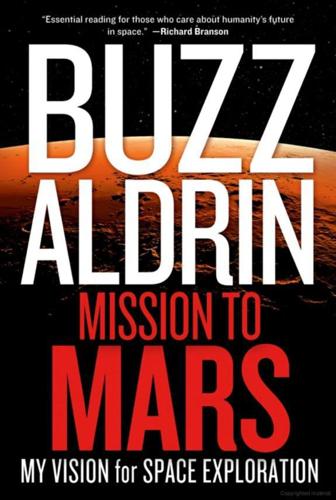
Mission to Mars: My Vision for Space Exploration
by
Buzz Aldrin
and
Leonard David
Published 1 Apr 2013
How sorting out the adjudication of resource-rich celestial objects will play out remains open for dialogue and, quite literally, there is need to dig into these issues deeper. The outlook for mining asteroids was boosted in 2012 by the intentions of a new private U.S. company, Planetary Resources, Inc., based in Seattle. This team of entrepreneurs announced the venture aimed at mining the solar system, a plan that is billionaire-backed and enthusiastically supported by such people as filmmaker James Cameron, an adviser to the group. Chris Lewicki, President and Chief Engineer of Planetary Resources, has scripted a multipronged program to access resources from near-Earth asteroids. He makes it clear that developing space resources and creating a market for the volatile mineral and metallic resources of asteroids would be a slice of a larger undertaking.
…
Mining the moon, establishing space-based solar power, and growing a space tourism market are examples of taking the economic sphere of influence on Earth and moving it beyond the belt of moneymaking geostationary satellites, where it now abruptly stops. Planetary Resources design for capture of near-Earth asteroid for mining (Illustration Credit 5.12) Planetary Resources has outlined a plan to launch a line of low-cost robotic spacecraft. In essence, they have a business plan that calls for the detection, inspection, and interception of asteroids. A first step is to explore for and chart resource-rich asteroids within reach.
…
Hardy/www.astroart.org; 5.4 JAXA/NASA/© Pascal Lee 2012; 5.5 (UP), Stephen L. Alvarez/National Geographic Stock; 5.6 (LO), Universal Images Group/Getty Images; 5.7 Dan Durda/B612 Foundation/FIAAA; 5.8 B612 Foundation/Sentinel Mission; 5.9 NASA; 5.10 NASA; 5.11 NASA; 5.12 NASA; 5.13 AP Images/Planetary Resources. Chapter 6 6.1 Pete Souza/The White House; 6.2 NG Maps; 6.3 NASA/USGS; 6.4 NASA/JPL-Caltech/Malin Space Science Systems; 6.5 Photo by Mark Thiessen/National Geographic; 6.6 Courtesy of Lockheed Martin; 6.7 ESA/DLR/FU Berlin (G. Neukum). Chapter 7 7.1 NASA/JSC; 7.2 NASA/JPL-Caltech; 7.3 NASA; 7.4 Bryan Versteeg/Spacehabs.com; 7.5 NASA; 7.6 NASA; 7.7 NASA; 7.8 Robert Zubrin; 7.9 SpaceX; 7.10 SpaceX; 7.11 NASA/JPL; 7.12 (UP), NASA; 7.13 (LO), Arizona State University/Ron Miller; 7.14 Graphic by Robert O’Brien, Center for Space Nuclear Research at DOE’s Idaho National Laboratory; 7.15 NASA; 7.16 JPL/NASA.

Future Crimes: Everything Is Connected, Everyone Is Vulnerable and What We Can Do About It
by
Marc Goodman
Published 24 Feb 2015
KENNEDY Though the space shuttle program has ended, much research and activity in the field of space science continues, particularly with private companies like Elon Musk’s SpaceX and Richard Branson’s Virgin Galactic commercializing space transportation. Another space company, Planetary Resources, founded in 2012 by Peter Diamandis and Eric Anderson, intends to bring the natural resources of space to within humanity’s reach by landing robots on asteroids and mining them for raw materials, using ultralow-cost 3-D printed spacecraft. Though it may be difficult to fathom, criminals and terrorists alike will attempt to harness space technologies to their advantage.
…
The prize was the fundamental kindling, the thing that sparked the innovation that solved the problem and helped create today’s aviation industry. In 1996, the physician, space enthusiast, and serial entrepreneur Peter Diamandis took up the Orteig mantle and created the XPRIZE Foundation, a nonprofit organization that designs and manages public competitions intended to encourage technological development for the betterment of mankind. Perhaps it is time for such a competition in cyber security. According to Diamandis, “An XPRIZE is a highly leveraged, incentivized prize competition that pushes the limits of what’s possible to change the world for the better. It captures the world’s imagination and inspires others to reach for similar goals, spurring innovation and accelerating the rate of positive change.”
…
Others will be motivated by their ability to solve real-world problems and helping their fellow man. For those that find neither appealing, there’s always cold hard cash. Eye on the Prize: Incentive Competitions for Global Security The day before something becomes a breakthrough, it’s a crazy idea. PETER DIAMANDIS Prizes have a way of focusing the mind. Just ask the throngs who show up for a chance at the Mega Millions lottery jackpot. But prizes can also be the spark that produces a revolutionary solution to an intractable problem. Such was the case when the British Parliament established the Longitude Prize in 1714 in an effort to help with maritime navigation in order to ensure the “safety and quickness of voyages, the preservation of ships, and the lives of men.”
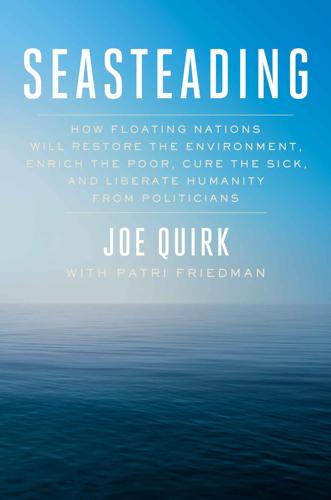
Seasteading: How Floating Nations Will Restore the Environment, Enrich the Poor, Cure the Sick, and Liberate Humanity From Politicians
by
Joe Quirk
and
Patri Friedman
Published 21 Mar 2017
Back when he was still trying to convince governments to see beyond the next election, he proposed a plan to harvest “strategic minerals and marine methane hydrates from the seabed.” Bottom line: it’s easier to dig through water than rock. You just have to go a lot deeper. Or send robots into outer space. In recent years, companies such as Deep Space Industries, Planetary Resources, and Kepler Energy & Space Engineering announced hopes to land rockets on asteroids and build “space infrastructure” to exploit them for rare earth minerals, prompting criticism that the quality of ore is speculative and the cost is even more astronomical than the ambition. We have to ask ourselves why billionaire aerospace entrepreneurs are talking about mining asteroids when we should be mining the sea.
…
., 189 pests and pesticides, 70 Pew Charitable Trusts, 262 Philippines, 90 pH level, 108 phosphorus, 6, 52, 69, 90–91, 144 peak phosphorus, 6, 51, 302 photosynthesis, 73–74, 83, 97, 109, 122, 145 Physical Review Letters, 258 phytoplankton, 73, 150 Pimentel, David, 82, 83 pirates and piracy, 269–70 Pivot15 Challenge, 236 Planetary Resources, 160 Planetary Sustainability Collaboratory, 79 plankton, 76, 156–57 plant factory (vertical garden of vegetables), 174 plate tectonics, 161 Pollan, Michael, 70 pollution, 69, 74, 82, 84, 259 see also carbon dioxide; runoff Pond Biofuels, 136–37 pond scum, 91, 133, 135–36 Portunus (Roman god), 18 Portunus Project, 18 Poseidon Adventure, The, 272 poverty, 69, 70, 189, 198–99, 202 see also aquaculture Powell, Ken, 69 power purchase agreements (PPA), 156 Practice Fusion, 28, 131 “Predictability of Rogue Events,” 258 Prelude (floating natural gas facility), 12, 147 Princeton Hydro, 91 Project Eyes on the Seas, 262 Project Loon, 235 Project OASIS (Ocean Aquaculture for Seastead Integrated Solutions), 123, 212 Pryor, Miranda, 127 Public-Domain Architects, 44 Radulovich, Ricardo, 71–72, 75, 76–78 aquaculture, 87–88, 90, 95–96, 110 as aquapreneur, 56, 66–68, 80–81, 85–86 on blue revolution, 126–27 on photosynthesis, 73–74, 83–85 on regulations, 91–92 at Seasteading Conference, 93–97, 109 on subsidies, 93 rainforests, 53 Ramsden, Neil, 127 rare earth minerals, 159–60 Rauch, Jonathan, 290 Reagan, Ronald, 151 Redfield, Alfred C., 144 Redfield ratio, 144, 156 Red Sea, 260 refugees, 22–23 regulations: health care, 225–26, 230, 239, 241, 243–47 restrictions in aquaculture, 127 and seasteading, 55, 247–50 and special interests, 91–92 US and EU, 45, 165, 270–71 regulatory capture, 91 Rehmke, Gregory F., 280–81 Reidy, William, 18 Reignwood Group, 148 remittances, 298 Resonance Medical Technologies, 242 Réunion, 149 Revenge of Cuba (spinoff from Ephemerisle), 36 Ribozyme Pharmaceuticals, 131 rice, 78 rickets, 79 Rime of the Ancient Mariner, The (Coleridge), 72 Rise and Fall of Classical Greece, The (Ober), 281 robots, 160, 169, 171, 232 rogue waves, 161, 258–59 Roman Colosseum, 20 Rotterdam, see Netherlands Royal Caribbean International, 14–15, 264 Rudnick, Phillip, 164 Rule of Law Index, 201 runoff, 69, 74, 83, 90, 126, 134, 259 Saeme, Mohammed, 221 SAEMED, 221 Sagan, Carl, 72 Saint Martin (island), 240 St.
…
The profit motive overpowers the stewardship motive. Everybody blames the oil companies, but we really enjoy our cars, bottled drinks, and computers, which require oil to produce, so we might as well point the finger at everybody except the Amish and Jain monks. The human race is faced with eight of what futurist Peter Diamandis, founder of the XPRIZE Foundation and Singularity University, calls “humanity’s grand challenges.” The problems list is actually larger and scarier than the list he proposed, so we’ve updated it: Sea level rise, fish extinction, poisonous coastal “dead zones,” food shortages, peak oil, water crisis, resource wars, and poverty.

Frugal Innovation: How to Do Better With Less
by
Jaideep Prabhu Navi Radjou
Published 15 Feb 2015
In 2013, it became one of the first global companies to join the “Circular Economy 100” programme. Initiated by the Ellen MacArthur Foundation, this programme regroups over 100 companies committed to supporting the development of a sustainable economic growth model based on the reuse of materials and the conservation of planetary resources.1 By 2020, Tarkett aims to use 75% of renewable and recycled materials, eliminate industrial waste going to landfill, make sure that all flooring products are made from phthalate-free plasticisers and have low TVOC emissions, and double the 2010 volume of collected post-installation and post-consumer products.
…
X PRIZE has proven the value of jugaad by leveraging this bottom-up approach of “better, faster, cheaper” to the point of sending a man into space for a fraction of what NASA spends. This compelling new book, Jugaad Innovation, articulates how you can start to accomplish amazing things on a shoestring. It is a vital read.’ – Peter H. Diamandis, Founder and Chairman, X PRIZE Foundation ‘Jugaad Innovation throws cold water in the faces of CEOs, reminding them of the immense power of grassroots, do-it-yourself, cheap, quick, simple innovation. This is one of the most important lessons that emerging markets are teaching the West.’ – George F.